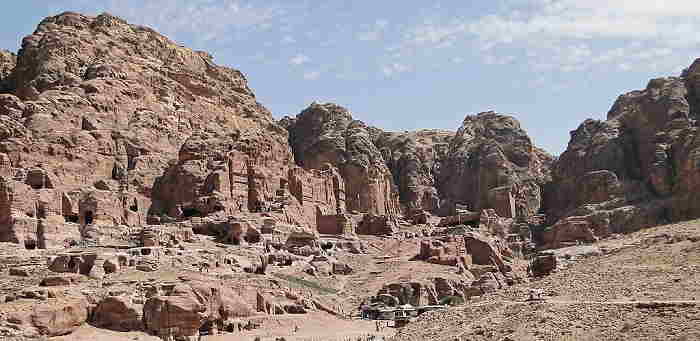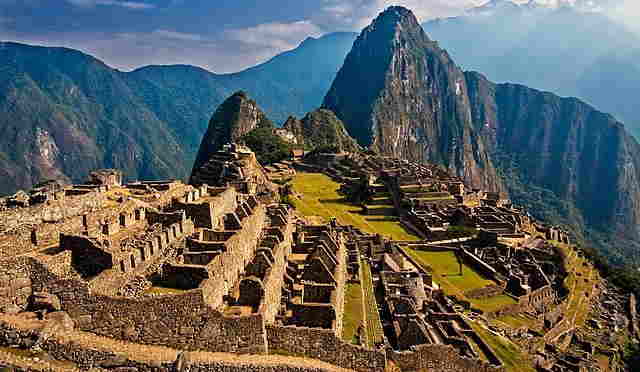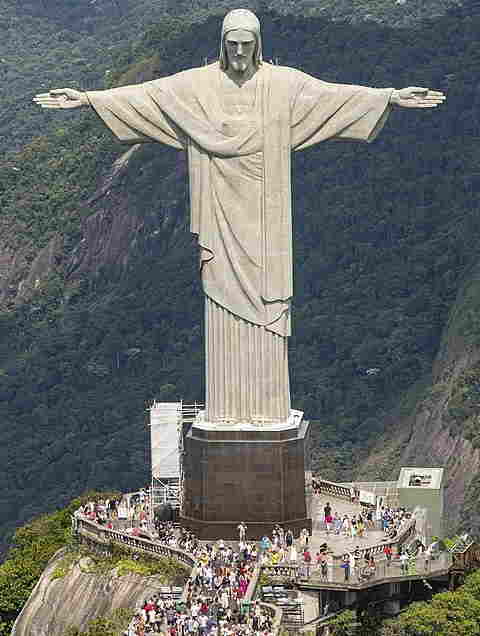

The Great Wall of China is an extraordinary architectural marvel that stretches across northern China for over 13,000 miles (21,196 kilometers). Constructed over centuries, it is a testament to human ingenuity and engineering prowess. The wall was primarily built as a defensive structure to protect ancient China from invasions by nomadic tribes. The construction of the Great Wall began as early as the 7th century BC and continued for centuries, with different dynasties adding their contributions. The most well-known sections of the wall were built during the Ming Dynasty (1368-1644 AD). The wall was constructed using a variety of materials, including stone, brick, wood, and earth. It incorporated watchtowers, beacon towers, and fortresses strategically positioned along its length. The Great Wall of China is not a continuous structure but rather a series of walls, fortifications, and natural barriers interconnected to form a defensive system. It traverses diverse terrains, including mountains, deserts, and grasslands, presenting a remarkable feat of engineering and construction.

Chichen Itza is an ancient Mayan city located in the Yukatan Peninsula of Mexico. It is one of the most important archaeological sites in the world and was once one of the most powerful cities of the Mayan empire. It was at its peak of power and influence between the years 600 and 1200 AD and is estimated to have had a population of around 35,000. Chichen Itza was an important pilgrimage site for the Maya and many of its structures were designed to serve as a meeting point for pilgrims from all over the Mayan world. The most impressive building at Chichen Itza is the El Castillo pyramid, which is thought to have been used as a temple and an observatory. It is composed of nine tiers and is aligned perfectly with the cardinal directions. It is one of the most impressive examples of Mayan architecture. The site of Chichen Itza covers an area of about four square miles and was declared a UNESCO World Heritage Site in 1988.

Petra is an ancient city located in the Jordanian desert in the southern part of Jordan. It is one of the most famous archaeological sites in the Middle East, and has been inhabited since prehistoric times. The city is renowned for its impressive and intricately carved sandstone cliffs, its grandiose architectural structures, and its vast network of ancient tombs and temples. Petra's most iconic feature is the majestic Treasury, which is the only surviving monument of the ancient city. The Treasury is carved directly into the sandstone cliffs and is decorated with elaborate carvings and sculptures. It is believed to have been built by the Nabataeans, an ancient civilization that flourished in the region from around 400 BC to 106 AD.

Machu Picchu is a citadel located high in the Andes Mountains of Peru. Built in the 15th century, it was probably the royal estate of the Inca emperor Pachacuti. The site was abandoned shortly after the Spanish conquest of Peru in the 16th century and remained largely unknown until 1911, when it was rediscovered by American historian Hiram Bingham. Machu Picchu is located on a mountain ridge above the Urubamba Valley, which lies on the eastern side of the Andes. The site is composed of three main areas: the urban center, the agricultural terraces, and the sacred sector. The urban center of Machu Picchu is the most distinctive and impressive part of the site. It consists of a series of narrow, stepped terraces that rise up the sides of the mountain and culminate in a series of ornate temples and palaces. At the top of the terraces are the Intihuatana stone, the famous sun-dial that was used by the Incas to mark the solstices, and the Temple of the Sun, which is believed to have been used for religious ceremonies.

Christ the Redeemer is an iconic statue located in Rio de Janeiro, Brazil. Perched atop the Corcovado mountain, it is one of the most recognizable symbols of Brazil and a renowned monument around the world. The statue depicts Jesus Christ with outstretched arms, symbolizing peace and offering a welcoming embrace to all. Standing at a height of 98 feet (30 meters), Christ the Redeemer overlooks the city, providing breathtaking panoramic views of Rio de Janeiro and its surrounding landscapes. The statue was completed in 1931 and is made of reinforced concrete and soapstone. Christ the Redeemer serves as a significant religious and cultural landmark. It represents the deep faith and predominant Christian heritage of Brazil. The statue attracts millions of visitors each year who come to admire its beauty, pay homage, and capture the awe-inspiring views of the city from its vantage point. It has become an enduring symbol of peace, spirituality, and the warm Brazilian hospitality.

The Colosseum is an iconic symbol of the Roman Empire and its architectural and engineering prowess. Located in the heart of Rome, Italy, the Colosseum is a large amphitheater that was built between 70 and 80 A.D. by Emperor Vespasian and his son Titus. Constructed of concrete and stone, it is the largest amphitheater in the world and stands over 50 meters tall. The Colosseum is elliptical in shape and its exterior consists of four main stories, each with its own set of arches. The Colosseum was used for public spectacles, such as gladiator contests and animal fights. It could hold up to 65,000 spectators and was divided into four main sections. The higher the class of spectator, the closer they were to the action. The arena itself was filled with sand, which was used to absorb the blood of the combatants and to help with drainage. The Colosseum was damaged by fire and earthquakes throughout its lifetime, but it still stands today as a reminder of the grandeur and power of the Roman Empire.

The Taj Mahal is a stunningly beautiful white marble mausoleum located in Agra, India. It is considered one of the most iconic and recognizable buildings in the world. The Taj Mahal was commissioned by Mughal Emperor Shah Jahan in 1632 in memory of his beloved third wife, Mumtaz Mahal. The Taj Mahal stands on the banks of the Yamuna River and is surrounded by lush gardens and intricate marble walls with four minarets rising majestically from the four corners. The mausoleum stands at the center of the complex and is considered one of the most impressive examples of Mughal architecture. It is made up of four distinct parts – a large marble dome, an entrance hall, a grand sandstone gate and a reflecting pool. The most striking feature of the Taj Mahal is its sheer size and beauty. It is made from white marble, which was quarried from Rajasthan and inlaid with semi-precious stones, such as jade, crystal and lapis lazuli. The marble is carved with intricate designs and motifs that are said to represent the many facets of the Mughal Empire. The Taj Mahal also features an array of Islamic calligraphy and verses from the Quran, which were inscribed by the Mughal emperor himself.